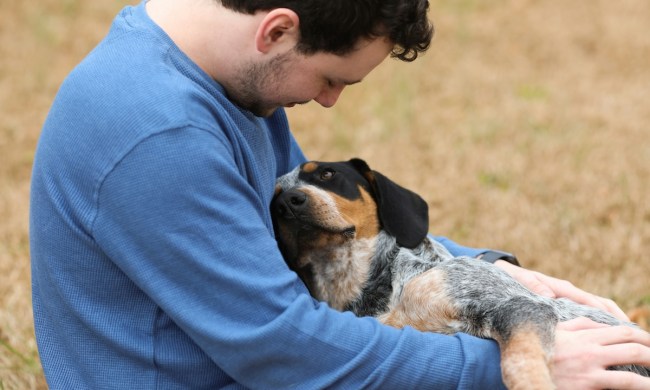According to his pet parent, Chowder the skateboarding bulldog is obsessed with skating, and has been since his first attempt at figuring out what this board with wheels could do. As his 1.4 million followers can attest, he is clearly skateboarding of his own free will and loving every minute of it. But is this a safe activity for dogs?
Recently, Chowder’s pet parents have released a TikTok video addressing some safety concerns that have arisen in the comments of Chowder’s many skating, sledding, and skimboarding videos: is he safe? What if he gets hurt? Can he stop?
@chowderthebulldog #answer to @novazzq Chowder’s safety is our top priority. Pls see our dog skate safety vids and pinned comments. #petsoftiktok #skateboarding #adayinmylife #HowTo #dogtok #skater #olympicspirit #skate #olympics
In this video, Chowder’s pet parent explains that he does indeed know how to stop, and can do so as needed. In fact, it’s pretty impressive to watch Chowder navigate turns and make decisions about his direction based on obstacles in his path. To stop, he keeps one paw on the board while hopping off with the other paws to slow his board. His paws are calloused, and it does not appear that stopping on the pavement hurts his pads at all.
We are pretty obsessed with Chowder’s skills, and you can bet we have joined his legions of fans on TikTok. Most dogs, however, do not have tough enough pads to handle the use Chowder puts his through. Before you decide to teach your own pup to skateboard, know how to protect tender paws first.
Dog safety on pavement and concrete
During the summer months, pavement heats up, and dogs’ paws can get burned (yes, even Chowder’s, so we hope he had summertime booties to wear if the pavement starts baking). On a 92 degree day, pavement can get as hot as 103 degrees, and blacktop can reach temperatures of over 110 degrees. Keeping your dog’s paws protected in summer is essential. Not only will you help prevent scrapes and tears to the paw pads if your pup does enjoy stunts like leaping, jumping, chasing, or yes, even skateboarding, on the pavement, but you will keep your precious fur baby from getting blisters or even second-degree burns as well.
The best protection for your dog is booties or paw pads, such as Ruffwear Grip Trex Dog Boots, which are ideal for hikes and more adventurous walks. If your pup will just be chilling instead of exercising, you might even want to gift her these adorable doggy crocs.
Shallowford Vet Hospital suggests walking dogs during off-peak times of the day in the summer months, to avoid the heat of the day and the hottest pavement temperatures. Their vet experts agree that it can be a good idea to toughen dogs’ paws by keeping walks on the pavement as long as it’s cool enough. Just like Chowder and his skateboarding, the daily walk on the harder surface will enable callouses to form that will further protect your pup.
You can buy canine-specific peel-and-stick pads for your dog’s paws, and use Paw Wax each day to soothe any discomfort. Not every dog will become a skateboarding legend like Chowder, but they can all be protected while playing with pet parents on the pavement!



